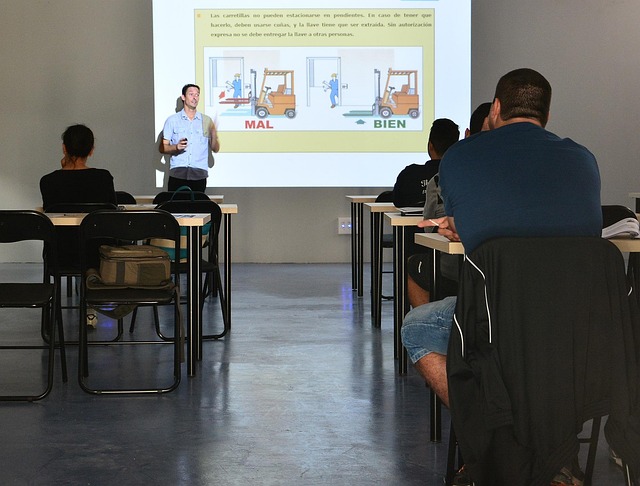
Machine Learning (MLC) advancements, led by neural networks, have revolutionized sectors from image recognition to natural language processing (NLP). NLP techniques like text classification and sentiment analysis benefit from pre-trained models, enabling accurate language understanding in virtual assistants and more. Reinforcement Learning (RL) offers a trial-and-error approach for dynamic scenarios, excelling in robotics and game playing. GANs and Variational Models enhance text classification and recommendations, improving dataset diversity and AI security.
Explore the frontiers of Machine Learning with our comprehensive guide on advanced ML techniques. From unraveling complex patterns through deep learning architectures to mastering natural language processing for textual data analysis, we delve into the core of Modern ML Applications (MLC). Reinforcement learning’s role in strategic decision-making and generative models like GANs and variational models are also explored, providing insights into the dynamic landscape of advanced MLC.
- Unveiling Deep Learning Architectures: A Journey into MLC
- Natural Language Processing: Techniques for Textual Data Analysis in MLC
- Reinforcement Learning: Strategies for Complex Decision Making in MLC
- GANs and Variational Models: Generative Approaches in Advanced MLC
Unveiling Deep Learning Architectures: A Journey into MLC
Unveiling Deep Learning Architectures takes us on an exciting journey into the realm of Machine Learning (MLC). These architectures, powered by neural networks, have revolutionized various fields, from image recognition to natural language processing. At their core, deep learning models excel at learning intricate patterns and representations directly from raw data, surpassing traditional ML approaches.
One of the key advantages lies in their ability to prevent overfitting—a common challenge in machine learning. Through techniques like walk representation learning, these architectures can generalize better, enabling them to perform exceptionally well on unseen data. Explore the vast landscape of pre-trained models and their use cases; they offer a robust foundation for developing cutting-edge applications. Give us a call to discover how these innovations are transforming industries today.
Natural Language Processing: Techniques for Textual Data Analysis in MLC
Natural Language Processing (NLP) is a powerful subset of Machine Learning (MLC) that focuses on understanding and generating human language. By employing various techniques, NLP enables machines to interpret, analyze, and produce textual data with remarkable accuracy. This field has seen significant advancements, driven by the increasing availability of text-rich datasets and the growing demand for intelligent applications like virtual assistants and sentiment analysis tools.
In MLC, NLP techniques are pivotal for tasks such as text classification, sentiment detection, machine translation, and summarization. For instance, transfer learning across domains allows models to leverage knowledge from one language or domain to another, improving performance in low-resource scenarios. Social network analysis within textual data can uncover hidden patterns and relationships, enhancing the depth of insights derived from text. Additionally, image recognition techniques have been integrated with NLP to create multimodal systems that can interpret both visual and textual cues, opening up new possibilities in areas like sign language translation and multimedia content analysis. Efficient model deployment is another advantage, as optimized algorithms enable real-time processing for dynamic applications.
Reinforcement Learning: Strategies for Complex Decision Making in MLC
Reinforcement Learning (RL) is a powerful strategy for complex decision-making in Machine Learning (MLC). Unlike supervised learning, RL enables models to learn through interaction with their environment, receiving rewards or penalties based on their actions. This iterative process allows models to develop strategies that maximize cumulative reward over time, making it ideal for dynamic and uncertain scenarios often encountered in MLC applications.
RL excels in areas like robotics, game playing, and autonomous systems, where traditional approaches struggle. Advanced RL algorithms combine with data mining techniques overview, regularization techniques, and efficient model deployment to optimize performance. For instance, time series analysis methods can be leveraged to predict reward signals, while chatbot development benefits from RL’s ability to learn conversational strategies through interaction. Visit us at our domain adaptation challenges anytime for more insights into how these innovations are reshaping the future of MLC.
GANs and Variational Models: Generative Approaches in Advanced MLC
Generative Adversarial Networks (GANs) and Variational Models are cutting-edge techniques within Advanced ML, revolutionizing text document classification and content-based recommendations. GANs, consisting of a generator and discriminator network, excel at creating synthetic data that mimics real distributions. This ability makes them invaluable for training models on diverse datasets, enhancing performance in tasks like image synthesis and text generation.
Variational Models, on the other hand, focus on learning probability distributions through an optimization process known as empirical risk minimization. These models prioritize interpretability and robustness, making them robust against adversarial attacks on models anytime. By navigating these complex landscapes, Variational Models contribute to the advancement of MLC, offering both innovative solutions for content-based recommendations and improved defenses against potential vulnerabilities in AI systems.
Advanced ML techniques, encompassing Deep Learning architectures, Natural Language Processing, Reinforcement Learning, GANs, and variational models, have significantly pushed the boundaries of Machine Learning in Complex Decision Making (MLC). By leveraging these cutting-edge approaches, researchers and practitioners are equipped to navigate intricate datasets, understand natural language nuances, and create innovative solutions that were once considered unimaginable. As we continue to explore uncharted territories within MLC, the potential for groundbreaking applications remains vast, shaping a future where ML techniques further revolutionize industries worldwide.






